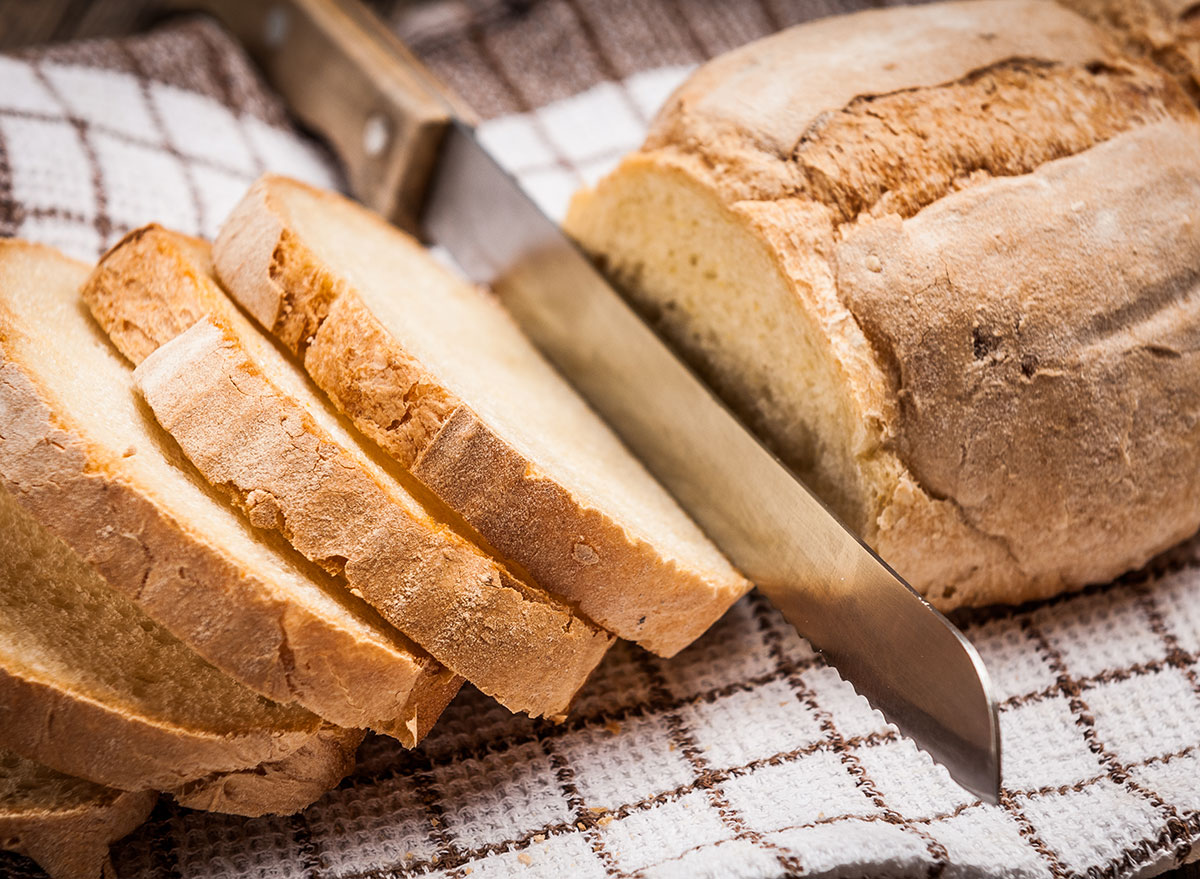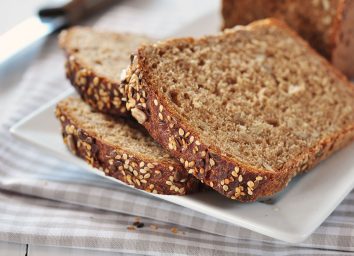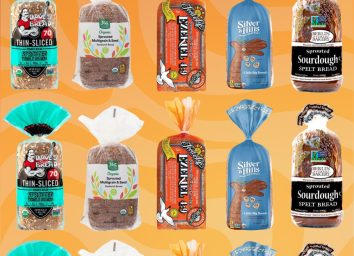The #1 Food Putting You at Risk of High Blood Pressure, New Study Suggests

Americans love their salty foods. From pretzels and potato chips to French fries and fried chicken sandwiches, there's no shortage of sodium-ridden foods to choose from between your nearest grocery store and go-to restaurant. But what about foods that secretly pack a lot of sodium?
Nearly half of all U.S. adults have hypertension or high blood pressure, according to the Centers for Disease Control and Prevention (CDC). For those who could greatly benefit from a reduction in sodium, it's imperative to know which foods are secretly packing a lot of the salty stuff.
As researchers from the University of Illinois College of Agriculture, Consumer, and Environmental Sciences point out in a new study, bread could be a silent, main contributor to someone's excessive sodium intake.
"Bread is one of the staple foods in a lot of people's diets, and people generally don't stick to just one serving of bread," Aubrey Dunteman, a graduate student in the university's Department of Food Science and Human Nutrition, and lead author on the paper, says in a statement.

Soo-Yeun Lee, a professor of food science at the University of Illinois, adds that 70% of sodium in the U.S. food supply comes from processed, packaged foods. This isn't to say that you shouldn't consume bread if you have hypertension. In fact, there are several healthy bread options out there—they just may not be easily accessible to everyone.
That's why Dunteman and Lee teamed up to see if there was a way to reduce the sodium content in bread without sacrificing flavor or texture. In their research, which was published in the International Journal of Food Science and Technology, they identified four possible methods: flavor enhancers; physical modification; salt reduction without any further mitigation; and sodium replacements.
The researchers concluded that a combination of all four methods may be the best approach for food manufacturers to adopt to help reduce the sodium content in bread.
"One of the four categories, salt reduction, is technically involved in all of them," Dunteman says. "Another category, salt replacement, is already heavily studied. We recommend more research into physical modification methods, as well as flavor enhancement types, and how to combine each of these methods with salt reduction."
If you're looking to bake your own bread at home, the researchers suggest reducing the amount of salt by 50%, but know that this will slightly alter the taste. If baking isn't your thing, or you just don't have time, consider shopping for bread that clearly states "low-sodium" on the packaging.
Now, be sure to check out The Best & Worst Sprouted Bread—Ranked! Then, don't forget to sign up for our newsletter!








